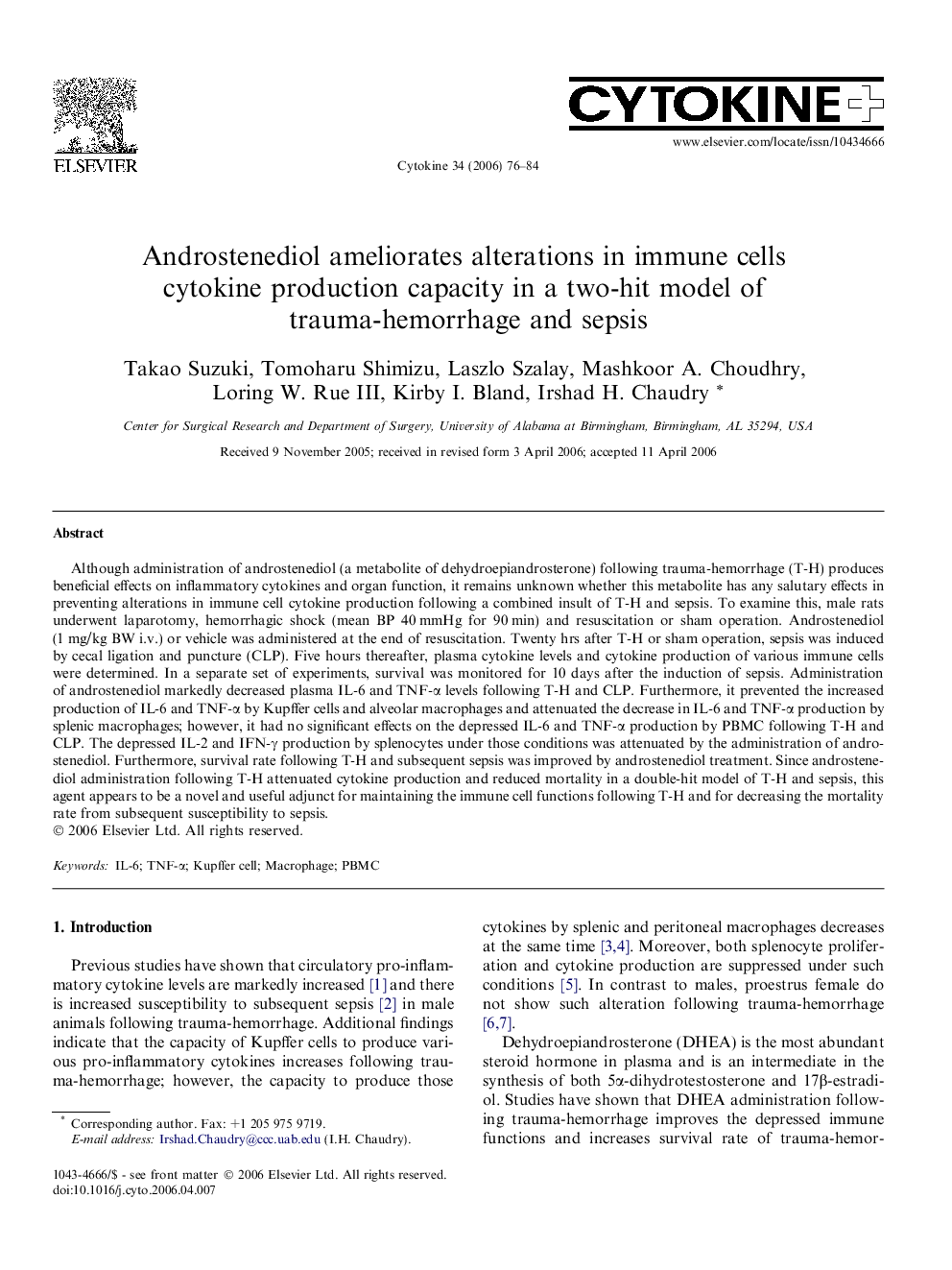| Article ID | Journal | Published Year | Pages | File Type |
|---|---|---|---|---|
| 2796099 | Cytokine | 2006 | 9 Pages |
Although administration of androstenediol (a metabolite of dehydroepiandrosterone) following trauma-hemorrhage (T-H) produces beneficial effects on inflammatory cytokines and organ function, it remains unknown whether this metabolite has any salutary effects in preventing alterations in immune cell cytokine production following a combined insult of T-H and sepsis. To examine this, male rats underwent laparotomy, hemorrhagic shock (mean BP 40 mmHg for 90 min) and resuscitation or sham operation. Androstenediol (1 mg/kg BW i.v.) or vehicle was administered at the end of resuscitation. Twenty hrs after T-H or sham operation, sepsis was induced by cecal ligation and puncture (CLP). Five hours thereafter, plasma cytokine levels and cytokine production of various immune cells were determined. In a separate set of experiments, survival was monitored for 10 days after the induction of sepsis. Administration of androstenediol markedly decreased plasma IL-6 and TNF-α levels following T-H and CLP. Furthermore, it prevented the increased production of IL-6 and TNF-α by Kupffer cells and alveolar macrophages and attenuated the decrease in IL-6 and TNF-α production by splenic macrophages; however, it had no significant effects on the depressed IL-6 and TNF-α production by PBMC following T-H and CLP. The depressed IL-2 and IFN-γ production by splenocytes under those conditions was attenuated by the administration of androstenediol. Furthermore, survival rate following T-H and subsequent sepsis was improved by androstenediol treatment. Since androstenediol administration following T-H attenuated cytokine production and reduced mortality in a double-hit model of T-H and sepsis, this agent appears to be a novel and useful adjunct for maintaining the immune cell functions following T-H and for decreasing the mortality rate from subsequent susceptibility to sepsis.
